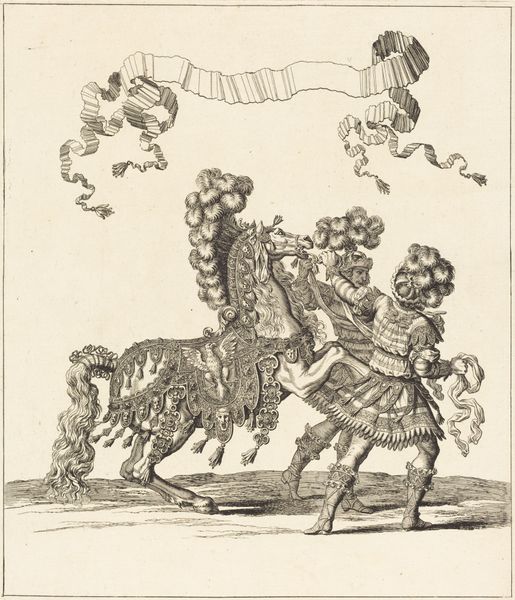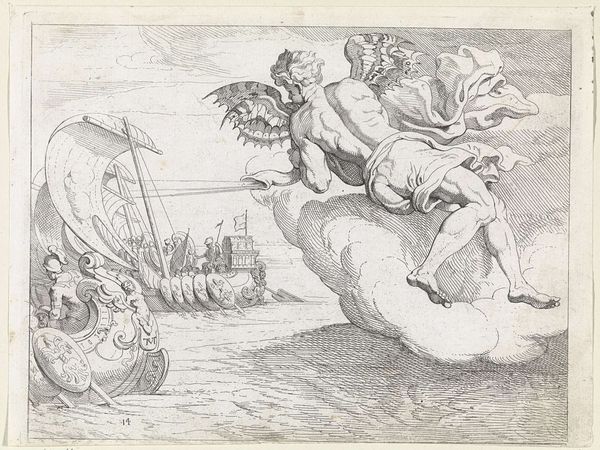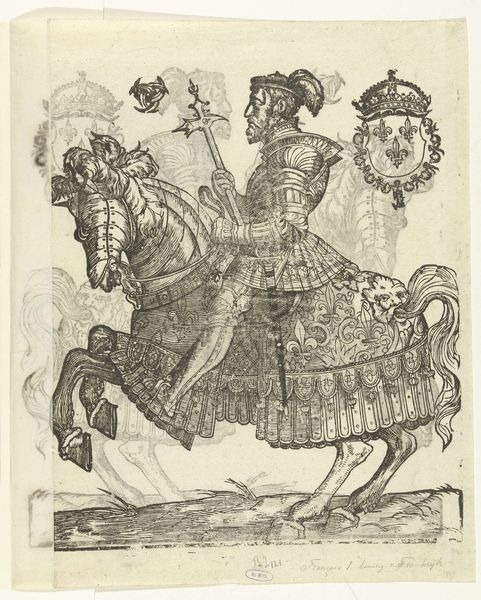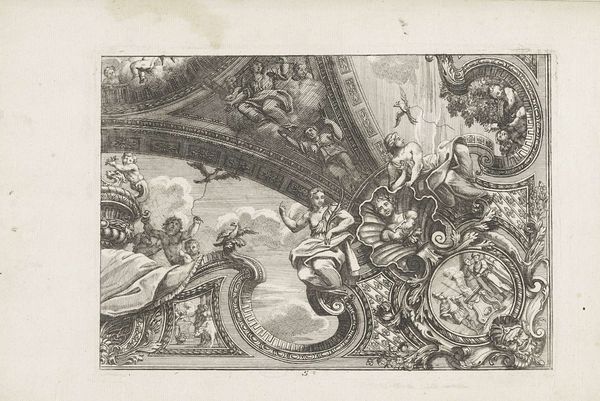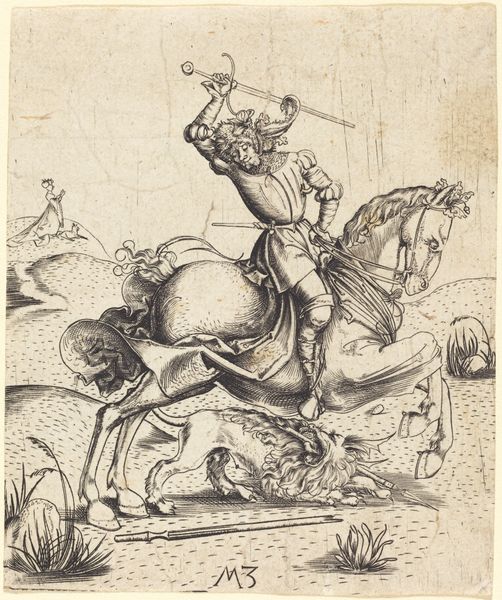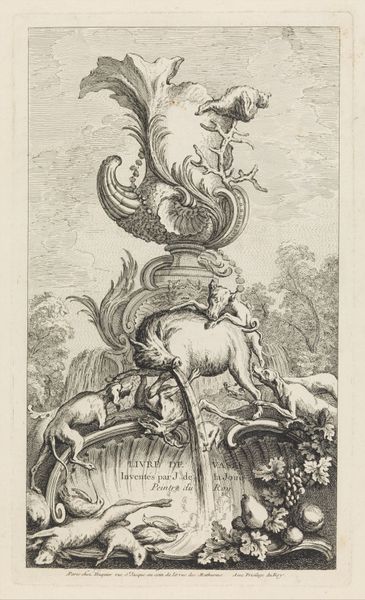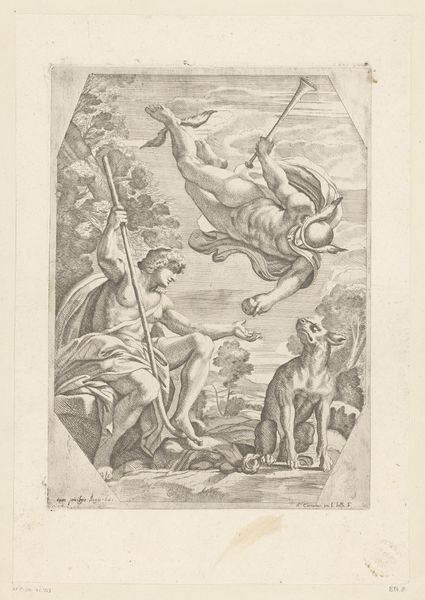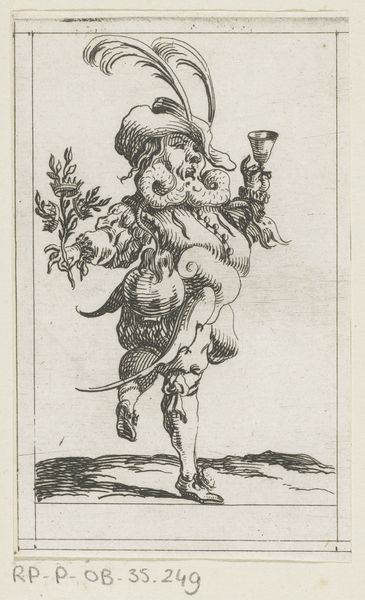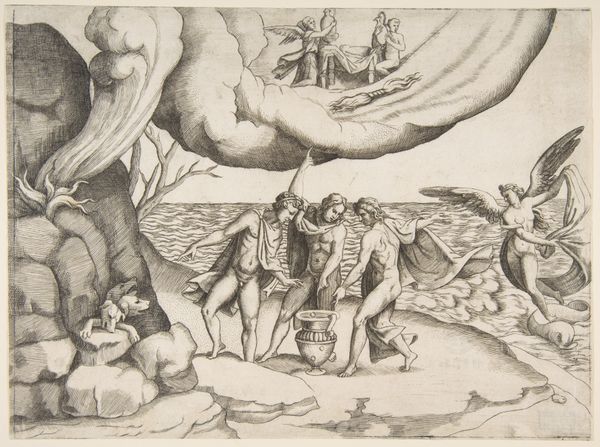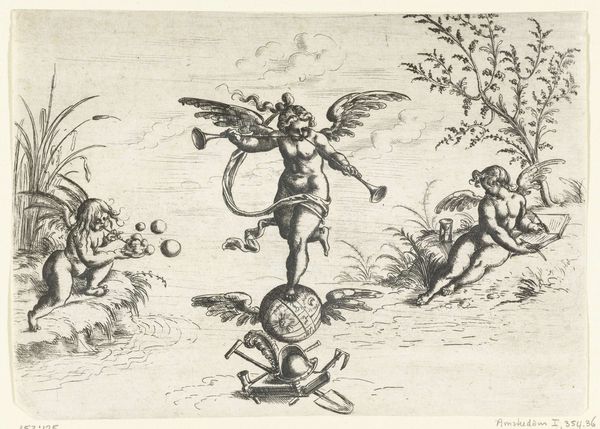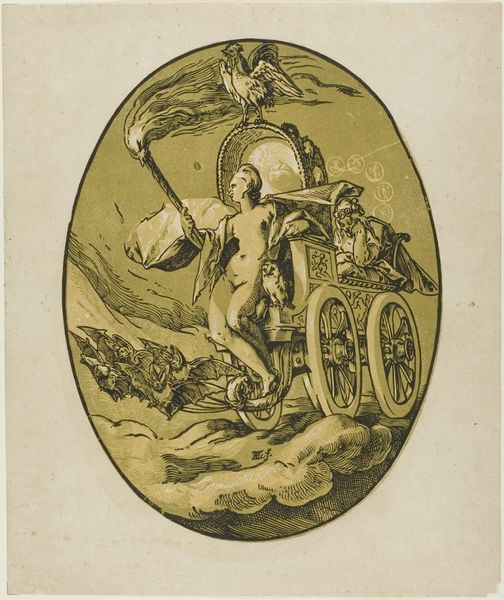
print, engraving
#
allegory
# print
#
pen illustration
#
pen sketch
#
landscape
#
figuration
#
11_renaissance
#
northern-renaissance
#
engraving
Dimensions: height 85 mm, width 60 mm
Copyright: Rijks Museum: Open Domain
Curator: Allow me to introduce you to “Galathea,” an engraving completed around 1537 by the artist known only as Monogrammist CG. Editor: My goodness, it feels both dreamlike and unsettling. She seems to stand precariously at the edge of some watery realm, those globe-like shapes behind her... almost overwhelming. Curator: Precisely. These orbs carry deep symbolic resonance, evoking notions of fortune and chance. Galathea, a Nereid in Greek mythology, embodied the sea’s ever-changing nature and the fortunes it could bring, both good and ill. The dolphin too carries the dual symbolism of savior and the danger that lies within the ocean depths. Editor: So she's holding… our destiny aloft? And there’s another figure below her. She’s on some kind of... monstrous dolphin-boar hybrid? That certainly captures the unsettling nature you mentioned. Curator: It amplifies the allegory. The pose of Galathea references her role as both the pursued and the pursuer, a victim of cyclops Polyphemus, embodying an erotic intensity but also, a vulnerability. These figures hint at a tapestry of meaning relating to desire and transformation. Editor: This is a world where the real and the imagined, danger and salvation all blur. It is as if Monogrammist CG has perfectly translated a psychological space into the visual world. I mean, look at that landscape in the background – cities looming, ships sailing...all set within the emotional undercurrent. Curator: And look closely at the fine details, executed with incredible precision, particularly on the face of Galathea and the mythological sea creatures, almost clinical in execution yet also filled with dynamism. Editor: I find myself considering how it echoes even today, in how we navigate our hopes, our fears...and, as you said, those dicey waters of chance. Curator: The persistence of such iconography indeed tells us something about how our ancestors viewed their existence, and in some ways how little that perception has evolved. Editor: It feels like a prompt to interrogate the symbols that unconsciously guide our own choices even now. Food for thought indeed.
Comments
No comments
Be the first to comment and join the conversation on the ultimate creative platform.
